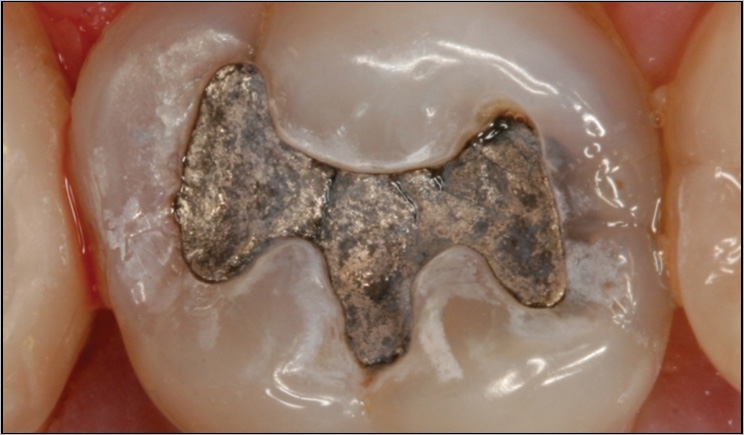
With patients increasingly aware of amalgam’s mercury content, dentists opting for less invasive procedures and safer workplaces, and the Minamata Convention on Mercury requiring each nation to reduce its amalgam use, dental amalgam is entering its twilight years.
The European Union (EU), as a party to the convention and together with its member states, has set in motion a three-year plan that could well end all European amalgam use, starting with a virtual ban on amalgam for children under 15, pregnant women, and breastfeeding mothers as of July 1, 2018.
The new rule also requires each member state to issue a national plan to phase down amalgam use by July 1, 2019, and for the European Commission to make a recommendation by June 30, 2020, on the feasibility of phasing out amalgam use entirely.1
The Berlin Declaration
Last November, European civil society met for a two-day summit in Berlin organized by the World Alliance for Mercury-Free Dentistry and its allies, including the European Environmental Bureau, which is Europe’s largest network of environmental citizens’ organizations. The summit’s keynote speaker, the Honorable Stefan Eck of Germany, led the decision-making process for the mercury regulation in the European Parliament.
The summit drew leadership from dental societies; academia; national, European, and international environmental, health, and women’s rights non-government organizations; and EU and German stakeholders and decision-makers. Civil society then issued the Berlin Declaration to End Amalgam Use in Europe by 2022.2
The World Alliance for Mercury-Free Dentistry works in Europe and throughout the globe, bringing together dentists, other health professionals, environmentalists, engineers, consumer advocates, and other stakeholders to phase out the use of mercury in the dental industry. With their broad range of expertise, affiliates and allies of this umbrella coalition cite a broad range of goals that can be accomplished by transitioning to mercury-free dentistry, including:
- Better oral health: Amalgams have been superseded by modern mercury-free alternatives that improve oral health. As noted in the World Health Organization report Future Use of Materials for Dental Restoration, “recent data suggest that RBCs [resin-based composites] perform equally well” as amalgam and offer additional oral health benefits because “[a]dhesive resin materials allow for less tooth destruction and, as a result, a longer survival of the tooth itself.”3
- Less mercury pollution: Dental amalgam is approximately 50% mercury. Between 226 and 322 tons of mercury was used for amalgam in 2015, accounting for about 19% of global consumption of mercury-added products.4 Much of this dental mercury enters the environment via cremation, dental clinic emissions, sludge incineration, and human waste.5 From there, amalgam’s elemental mercury can become methylmercury, which can contaminate the fish we eat and damage children’s developing brains and nervous systems.6
- Social justice: People in low-income and minority communities are not only more likely to receive amalgam,7 they are also more likely to live near the crematoriums, incinerators, and sewage facilities emitting amalgam’s mercury, increasing their cumulative chemical burden.
- Ending toxic trade: Amalgam manufacturers and suppliers often export amalgam to developing countries that do not have the infrastructure to even collect, transport, and store dental mercury waste, much less address the many other pathways by which amalgam’s mercury reaches the environment.
- Improved occupational health: Dental professionals—dentists, dental hygienists, dental assistants, and office staff—are exposed to higher levels of mercury in their workplace than the general population.
Together, we are working to take common-sense steps that will accelerate advancement toward these goals: academic curriculum modernization, consumer education, changes by insurance and government programs, and protections for children.
Dentistry’s old workhorse, amalgam, is headed out to pasture. Its departure means the dawn of more tooth-friendly procedures for patients, a sharp decline in mercury pollution, and a profession that embraces the full potential of 21st century dentistry.
References
- European Union. Regulation of the European Parliament and of the Council on Mercury, and repealing regulation (EC) No 1102/2008. http://data.consilium.europa.eu/doc/document/PE-4-2017-REV-1/en/pdf. Accessed January 15, 2018.
- Berlin declaration to end amalgam use in Europe by 1 July 2022. https://mercuryfreedentistry.files.wordpress.com/2017/11/berlin-declaration-to-end-amalgam-use-in-europe-by-2022.pdf. Accessed January 15, 2018.
- World Health Organization. Future Use of Materials for Dental Restoration. Geneva, Switzerland: World Health Organization; 2010. http://www.who.int/oral_health/publications/dental_material_2011.pdf. Accessed January 15, 2018.
- UN Environment. Global Mercury Supply, Trade and Demand. Geneva, Switzerland: United Nations Environment Programme, Chemicals and Health Branch; 2017. https://wedocs.unep.org/bitstream/handle/20.500.11822/21725/global_mercury.pdf?sequence=1&. Accessed January 15, 2018.
- Concorde East West. The Real Cost of Dental Mercury. March 2012. http://www.zeromercury.org/index.php?option=com_phocadownload&view=file&id=158%3Athe-real-cost-of-dental-mercury&Itemid=70. Accessed January 15, 2018.
- U.S. Environmental Protection Agency. EPA will propose rule to protect waterways by reducing mercury from dental offices [press release]. September 27, 2010. http://yosemite.epa.gov/opa/admpress.nsf/d0cf6618525a9efb85257359003fb69d/a640db2ebad201cd852577ab00634848!OpenDocument. Accessed January 15, 2018.
- Makhija SK, Gordan VV, Gilbert GH, et al. Practitioner, patient and carious lesion characteristics associated with type of restorative material: findings from The Dental Practice-Based Research Network. J Am Dent Assoc.2011;142;622-632.
Mr. Brown is president of the World Alliance for Mercury-Free Dentistry and executive director of the Washington-based Consumers for Dental Choice. He is a former state attorney general and author of two books. Working with governments, international organizations, and civil society from every continent, he led the World Alliance for Mercury-Free Dentistry through the three-year process of the Minamata Convention negotiations to secure a place for amalgam in the treaty. He can be contacted at charlie@mercury-free.org.
Ms. Lymberidi-Settimo is the Zero Mercury Campaign project manager at the European Environmental Bureau and the Zero Mercury Working Group cofounder and international coordinator. She has extensive experience working on mercury-related issues at EU and global levels, including environmental policy analyses and evaluation, also in the field of chemicals, waste, and products, as well as on project management and monitoring. She can be reached at elena.lymberidi@eeb.org, eeb.org, or zeromercury.org.
Related Articles
What Every Dentist Needs to Know About the New Amalgam Regulations
Conference Discusses the Future of Dental Amalgam
Europe Votes to Phase Out Mercury in Dental Amalgam











